Whether you’re road biking, hitting single-track trails on a mountain bike, or going for a casual stroll on a hybrid or cruiser, tire pressure is one of the most important aspects to pay attention to, regardless of when or where you’re riding.
Your tires are the only thing between you and the ground, so it's always best to be sure that they are inflated properly for your current riding situation and preferences.
If you ride on even a somewhat frequent basis, you need to be checking your tire pressure on a consistent basis. This almost always includes the use of an actual tire pressure gauge so you can be precise with things.
However, it’s safe to say that you may not always have a tire pressure gauge on you during certain riding situations, so you need to be able to at least provide an estimate without using any kind of tools.
Below, we’ll go over how to check your tire pressure, both with and without a tire pressure gauge.
Regardless of what type of bike you’re riding, the tires will always have a specific range on the side of them for you to reference. First, find this range before using a gauge or inflating.
Once you know the psi range, use your tire gauge by placing it on the valve and pressing down, causing the needle on the gauge to move and display the pressure. Alternate between the air pump and gauge until you reach the desired pressure.
To make things easier, get a pump with a built-in gauge.
While you may not be able to get a precise readout of tire pressure without a gauge, there are still some ways you can improvise.
If you are on a road bike, you can simply squeeze the tire on each side. If there is a lot of giving, inflate until you can barely squeeze it.
For a mountain bike, get on the bike and look down. If you see the tires protruding out on each side more than a millimetre or two, you’ll need to add air. If they feel rock hard and offer no give, you need to relieve some of the air out.
Different types of bike tires require different pressures. As a general rule of thumb, road tires usually need 80 to 130 psi, mountain bike tires require about 25 to 35 psi, and hybrid tires, 50 to 70 psi.
Weather can play a factor in your tire pressure as well. For instance, each 10-degree-Fahrenheit drop in outside temperature correlates to a 2 percent drop in tire pressure.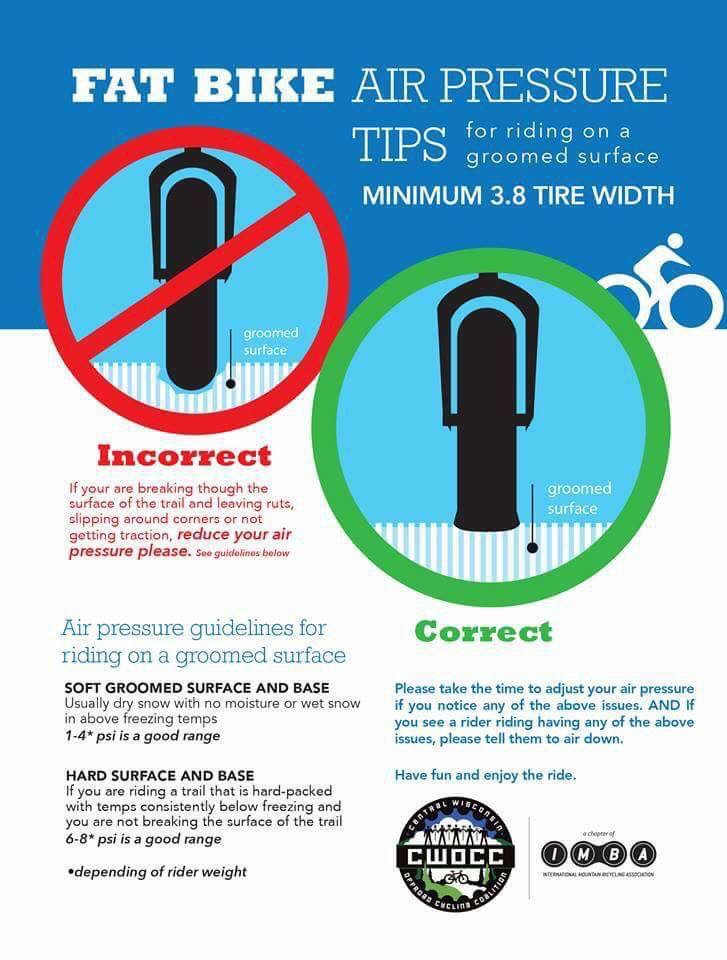 An example of this would be the outside temperature dropping from 90 degrees to 60 degrees, which means your road tire pressure would drop from 100 psi to 94 psi.
An example of this would be the outside temperature dropping from 90 degrees to 60 degrees, which means your road tire pressure would drop from 100 psi to 94 psi.
Also, the surface you’re riding on plays a factor too. If you’re on a road bike, and you are riding on a very smooth road, you can keep the psi up to a maximum level. Rougher roads will require a slight drop in pressure to offer a smoother ride.
If you’re on a mountain bike and you are going to be tackling some adventurous single-track that has uneven surfaces and plenty of sand and dirt, dropping your psi a bit can give the bike better traction and grip.
Bodyweight is another factor. Let’s say that a 165-pound rider uses 100 psi on his road bike. With that point of reference, a 200-pound rider inflates to around 120 psi, while a 130-pound rider could probably ride as low as 80 psi.
In any situation, never go above or below the manufacturer's recommended tire pressures.
Road bikes and tires are designed to go fast on flat ground. Higher air pressure allows them to roll more easily and quickly. These typically have a pressure range of 80 to 130 psi, while racers might go as high as 160 psi. If you're stuck inflating a road tire without a gauge and need to guess, a tire can barely be compressed with your thumb at 100 psi.
Mountain bikes, unlike road bikes, fly over rough, uneven terrain. Too much air in the tires causes too much bounce, resulting in a jarring ride. Lower tire pressure improves shock absorption while also increasing traction by allowing more of the tire to make contact with the ground. Most MTB manufacturers recommend a tire pressure of 30 to 50 psi because it is a good compromise between on-road (closer to 50) and off-road (near to 30) riding.
Hybrid bicycle tires must be inflated to a pressure that is halfway between that of a road bike and that of a mountain bike. This is normally between 50 and 70 psi. The lowest suggested inflation for children's bikes is 20 to 40 psi. But keep in mind that these are referred to as "recommendations" for a reason. Beyond your bike's style, a number of elements play a role in the inflation process.
Temperature impacts air pressure, as we know from physics. Aside from the weather, persistent deceleration with rim brakes causes friction, which can considerably raise temperatures inside the tube. Fortunately, they cool off rapidly as well, but it's something to be aware of on long descents. It's also something to say to your budding roadster when he or she learns the fundamentals of hand braking.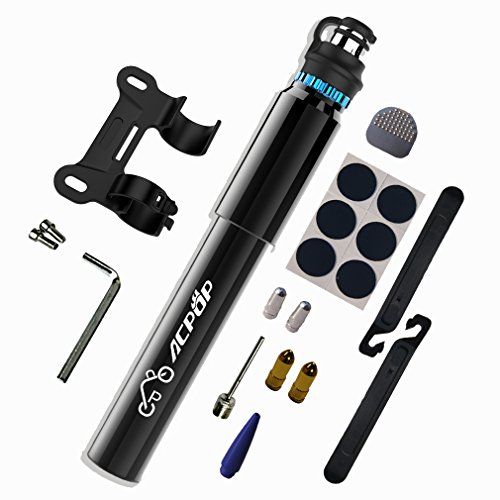
As a rule of thumb, more weight equals more pressure. To see the same performance in their tires, heavier riders should utilize a greater psi than lighter riders, whether they're competing in the Tour de Whatever or tearing up the backwoods. To put things in context, someone who weighs 200 pounds will probably want to pump in roughly 20 psi more than someone who weighs 160 pounds. There isn't a certain sliding rule for this, so experiment with the pressure to determine what works best for you. Keep in mind that rear tires tend to carry more weight than front tires, so make any required adjustments.
A popular question among casual bikers is "How often should I inflate my tires?" The answer is contingent on how frequently and how hard your bike is. Some people use the pump every few days, while others use it once a week, and yet others use it even less frequently.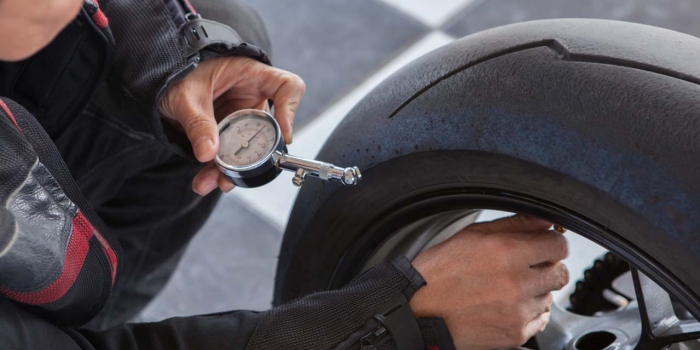 Even if you or your kids have been leaving your wheels in the garage for months, air will eventually seep out. As a result, just like a car, it's always a good idea to inspect your tires before each trip as a bike safety best practice. It's especially important if it's been a while.
Even if you or your kids have been leaving your wheels in the garage for months, air will eventually seep out. As a result, just like a car, it's always a good idea to inspect your tires before each trip as a bike safety best practice. It's especially important if it's been a while.
In a nutshell, don't do both. You run the risk of blowing the tube if you overinflate it, either during pumping or while riding, due to sudden or constant contact. Pinch flats can occur if the tire is underinflated. When you hit a bump with an underinflated wheel, the tube gets compressed between the rim and the tire casing. This not only harms the tire, but it can also harm the rim. Flat tires also slow you down and force you to pedal harder, which is not fun.
There are two types of bike pumps
Hand pumps are necessary for each avid cyclist, but they are more difficult to use and take longer to fill the tire. However, because they're portable, you'll always have your pump with you. Any long-distance bike trip would be silly if you didn't have your trusty hand pump and puncture repair kit.
However, because they're portable, you'll always have your pump with you. Any long-distance bike trip would be silly if you didn't have your trusty hand pump and puncture repair kit.
Floor pumps are the professional's pick since they work so well. They're easier to use and connect, and they'll fill your tires up considerably faster than a manual pump. Some come with gauges, which eliminate
1) The need to switch between a pump and a standalone gauge, or
2) Sheer guesswork if you're really lazy.
Expert bikers, on the other hand, are wary of floor pumps with gauges because the gauge's accuracy varies and can be off by as much as 10 PSI. On the bright side, if the gauge is constant, you can compute the difference and compensate by adjusting your goal PSI.
It’s worth saying again: Tire pressure is crucial. While we strongly recommend that you purchase a tire gauge, learning how to estimate tire pressure by look and feel can come in handy for the times you may be without. Either way, always be vigilant with your tire pressure.
While we strongly recommend that you purchase a tire gauge, learning how to estimate tire pressure by look and feel can come in handy for the times you may be without. Either way, always be vigilant with your tire pressure.
Bicycles.StackExchange
LiveStrong
Having the right PSI in your bike tires can make a world of difference. However, it would be an oversimplification to say that less air offers a more comfortable ride and more air makes you go faster. While this is true in many instances, the fact of the matter is that proper inflation for optimal performance depends on the individual rider and his or her bike.
Every tire has a recommended psi printed on its side close to where it touches the rim. This is usually written as a range (for instance, "90 to 115 psi") since there are reasons why you'd want to be on the higher or lower end, which we'll get into shortly.
Basic rule of thumb if your tires happen to not indicate a recommended pressure: pump them up until they're firm but still slightly squeezable. Alternatively, there are generally-accepted ranges based on bike type:
| Bike tire type | PSI range |
| Kids' bike tires | 20–40 PSI |
| Narrow tires / road bikes | 80–130 PSI |
| Medium tires / hybrid bikes | 50–70 PSI |
| Thick tires / mountain bikes | 30 PSI (off-road) 50 PSI (on-road) |
Road bikes and tires are built for speed over smooth surfaces. Higher air pressure lets them roll easier and faster. A typical range for these would be between 80 and 130 psi, although racers can sometimes go as high as 160 psi. Quick tip if you're caught inflating a road tire without a gauge and need to ballpark it: at 100 psi, a tire can barely be compressed with your thumb.
Quick tip if you're caught inflating a road tire without a gauge and need to ballpark it: at 100 psi, a tire can barely be compressed with your thumb.
Unlike roadies, mountain bikes are flying over loose, bumpy terrain. Tires with too much air lead to too much bounce, making for a jolty ride. Lower pressure helps with shock absorption while also giving you more traction since more of the tire comes into contact with the ground. MTB manufacturers recommend between 30 and 50 psi on most of their bikes since this is a nice balance between on-road (closer to 50) and off-road (closer to 30) riding.
Hybrid bike tires require pressure levels between those of road and mountain bikes. This is usually in the 50 to 70 psi range. Kids' bikes have the lowest recommended inflation, typically 20 to 40 psi. Keep in mind that these are called "recommendations" for a reason, though. A number of factors go into the inflation process beyond just your style of bike.
Which leads us to…
Because nothing in life is ever as simple as it should be, we've included a few more things to ponder when it comes to making sure everyone's tires are in good shape for their next ride.
As a general guideline, more weight = more pressure. Whether you're competing in the Tour de Whatever or shredding up the backcountry, heavier riders should use a higher psi than lighter ones to see the same performance in their tires. For perspective, someone weighing in at 200lbs will probably want to pump in around 20 more psi than someone who's 160. There's no real slide rule for this, so just play around with the pressure and see what feels best for you. Also keep in mind that rear tires tend to carry more weight than those in front, so adjust accordingly as necessary.
We know through physics that temperature affects air pressure. So, all else being equal, people biking in Miami in August are going to have higher pressure in their tires than people biking in Boston in January. In addition to weather, sustained deceleration using rim brakes generates friction that can increase temperatures inside the tube significantly. Fortunately, they also cool off relatively quickly, but it's something to keep an eye on during long descents. It may also be worth mentioning to your burgeoning roadster as he or she is learning the basics of hand braking.
In addition to weather, sustained deceleration using rim brakes generates friction that can increase temperatures inside the tube significantly. Fortunately, they also cool off relatively quickly, but it's something to keep an eye on during long descents. It may also be worth mentioning to your burgeoning roadster as he or she is learning the basics of hand braking.
In short, don't do either. If you overinflate, you run the risk of blowing the tube either while pumping or while riding due to sudden or constant impact. If underinflated, the low pressure could cause pinch flats. This occurs when the tube becomes squeezed between the rim and tire casing by hitting a bump with an underinflated wheel. Not only does this damage the tire, it can also hurt the rim. Plus, flat tires slow you down and make you pedal harder, which is just no fun.
"How often should I inflate my tires?" is a common question among many casual bikers. The answer depends on how often and how hard you ride. Some people break out the pump every few days, others once a week, and still others even less regularly than that. Even if you or your kids have left your wheels in the garage for months, air tends to seep out slowly, anyway. Therefore, as a bike-safety best practice, just like a car it's certainly never a bad idea to check your tires before each ride. Especially if it's been a while.
The answer depends on how often and how hard you ride. Some people break out the pump every few days, others once a week, and still others even less regularly than that. Even if you or your kids have left your wheels in the garage for months, air tends to seep out slowly, anyway. Therefore, as a bike-safety best practice, just like a car it's certainly never a bad idea to check your tires before each ride. Especially if it's been a while.
The pro's choice, floor pumps do a great job. They are easier to pump and attach, and will pump your tires up much quicker than a hand pump will. Some come with gauges, which eliminate 1) the need to switch back and forth between a pump and standalone gauge, or 2) if you're really lazy, outright guesswork.
However, some expert cyclists are cautious of floor pumps with gauges, as the accuracy of the gauge can svary and may be off by as much as 10 PSI. On the plus side, if the gauge is consistent you can calculate the difference and adjust your target PSI to compensate.
It may be tempting to simply use the air compressor at your neighborhood Exxon, but these are less than accurate and can often overinflate your tires (it's a gas station, they're meant for cars). For serious riders whose circuits take them far from home, a small hand pump can help you change a flat on the fly. Carbon dioxide inflators accomplish the same thing if you're an air-in-the-can kind of guy.
Essential for any enthusiastic cyclist, hand pumps are harder work to fill the tire with, and aren't as quick. But they're transportable, so you always have your pump with you. It's simply foolish to embark on any long distance bike ride without your trusty hand pump and puncture repair kit.
So there you go, we hope this quick guide to bike PSI pressure was useful. To recap: figure out what feels most comfortable based on your particular cycling style. Go with that. Keep an eye on your pressure, and check it before every ride. You'll get a feel for it over time. Like, literally.
You'll get a feel for it over time. Like, literally.
A bicycle is a well-thought-out and reliable device. But with improper operation, even the highest quality of its elements and systems can fail faster than it would happen naturally. Last but not least, it concerns the wheels. For example, on how the pressure in the chambers of the bike corresponds to a certain norm , not only comfort during rides, but also the life of the tires will depend.
If you constantly ride wheels with less than optimal pressure, chances are that cracks have already formed on the sidewalls of your tires. This usually leads to their premature erasure. Excessively high pressure increases the risk that the tire will simply burst at the most inopportune moment.
Stels bicycles are available. Big choice. Best price guarantee! Delivery to regions.
This is a controversial question, the answer to which depends on many factors . First of all, this is the intended terrain on which you plan to ride and the "profile" of the bike. High pressure is preferable if you're riding on tarmac as it gives you excellent rolling, while low pressure gives you solid traction on rough terrain. The style of riding and the weight of the cyclist also matter.
First of all, this is the intended terrain on which you plan to ride and the "profile" of the bike. High pressure is preferable if you're riding on tarmac as it gives you excellent rolling, while low pressure gives you solid traction on rough terrain. The style of riding and the weight of the cyclist also matter.
Tire manufacturers usually indicate the limits within which the cyclist can vary the inflation of the wheels . In our country, pressure is usually measured in atmospheres (at). This value is approximately equal to such a unit as Bar, which is common in Europe. On American tires and products intended for the American market, the allowable pressure is indicated in Psi.
Large selection of bicycles. We will deliver Merida bicycles to your region. Best price guarantee.
Some average tire pressure for a road bike designed for riding on good, smooth roads is 6.46 - 9.18 atmospheres. For a mountain bike, this figure varies from 2.38 to 4.08 atmospheres. For off-road driving, the optimal pressure will be from 2.38 to 3.26 atmospheres.
For off-road driving, the optimal pressure will be from 2.38 to 3.26 atmospheres.
As for the variation within the “limits of what is permitted”, in summer it is advisable to adhere to the lower limit so that the air in the chambers, heating up and expanding, does not damage it. In winter, on the contrary, a chamber pumped up to the upper limit will allow the treads on the tires to adhere more tightly to the surface. The pressure in the chambers must also be correlated depending on the rider's weight . Experts believe that approximately 1% should be added to the average value for each kilo of cyclist weight over 50.
The pressure should also depend on the type of rubber . So, slicks or semi-slicks need to be pumped up almost to the maximum, because they are designed specifically for the maximum diameter. In hot weather, they are allowed to be under-inflated by about a quarter. Cross-country tires are 2-2.3 inches wide and can withstand three to four bar tire pressure. Extreme tires need to be inflated to about average, but for each descent or trick, this value must be varied subtly.
Extreme tires need to be inflated to about average, but for each descent or trick, this value must be varied subtly.
You can measure the pressure in the bicycle chambers using the pressure gauge , on which the atmosphere scale is located. It can be bought separately, or together with a bicycle pump, for example, at VeloSklad. It is also possible to measure the pressure manually, but it is quite difficult to do this, since even with a slight inflating of the chambers, they are already poorly “palpable” with your fingers. It is believed that if the chamber does not shrink under the fingers, then the pressure is normal. But this is an inaccurate method, since everyone's hand strength is different. This art is available, perhaps, only to really experienced cyclists. More accurate data will be told to you at the nearest bicycle service or service station. Experienced cyclists suggest "remember", how many times you need to pump the chamber with your pump to get the optimum pressure.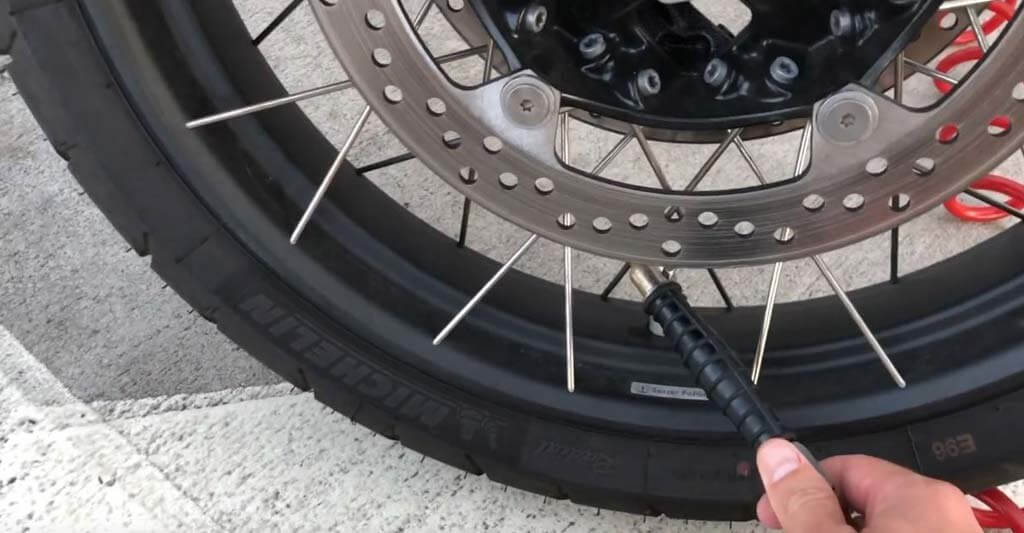
It is advisable to regularly inflate the wheels and control the pressure in the chambers, since air is lost not only through the nipple, but also through the rubber itself. Road bikes and sports bikes need to be pumped up before each ride, road bikes need it at least once a week, mountain bikes once every two weeks, and city bikes no more than once a month. If you regularly monitor the pressure in the chambers, you will extend the life of your bike.
Every cyclist is obliged to monitor the condition of his two-wheeled horse. It is from this that the envy of its service life and convenience when driving will be. When you go on your next trip, do not forget to measure the pressure in your tires. This procedure is mandatory, because it directly affects the comfort while driving.
Oddly enough, first of all, the quality of cycling, especially on asphalt, depends on the pressure in the bicycle wheels. Under-inflated wheels easily break through and extinguish a large percentage of the efforts of the cyclist, while over-inflated ones can damage the tube and lead to its rapid wear. Accurate knowledge and experience of riding will help you find the golden mean.
Under-inflated wheels easily break through and extinguish a large percentage of the efforts of the cyclist, while over-inflated ones can damage the tube and lead to its rapid wear. Accurate knowledge and experience of riding will help you find the golden mean.
Many people are accustomed to checking tire pressure using the old-fashioned method with their fingers. However, this method is very inaccurate, and the concept of a “well-inflated wheel” for each cyclist can be very different. That is why it is always better to have a pressure gauge on hand in order to accurately determine tire pressure.
Its cost is quite low, so everyone can afford such an acquisition.
Contents
In fact, the optimal pressure in the tires of a bicycle is a purely individual parameter that each biker varies within certain limits for himself: according to his riding style, according to the planned track and current level of training. Limits are set by technological restrictions, which we will consider further.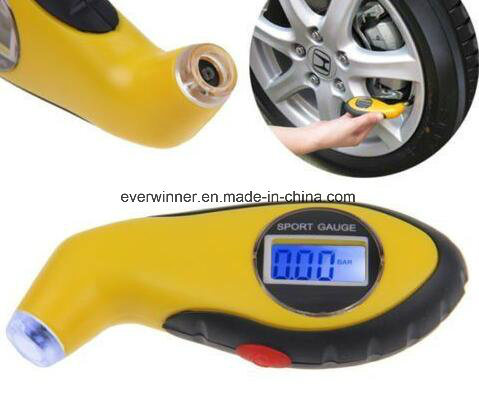
Here are the main factors to consider when choosing the level of inflation:
Considering all the pluses and minuses, one recommendation can be made: the wheels should be inflated enough to provide good grip and not damage the tube. To do this, there are standards for what pressure is considered acceptable. We will consider them further.
If the wheels are overinflated, the bike will have a good roll, but the tire will not absorb at all on uneven surfaces. All difficult sections will be much harder, since the contact patch of the tire with the ground will have a minimum area, and you will be skidded when cornering. Needless to say, when cycling in winter, the situation is aggravated by slippery surfaces. In addition, pumping can cause the wheel to explode. Old Soviet cameras are especially susceptible to this, the material of which is already turning into dust from old age. The tire breaks from excessive pressure not immediately, but for example on a hill, where a pebble falls under the wheel. This situation is dangerous because the tire is sometimes literally torn off the wheel.
All difficult sections will be much harder, since the contact patch of the tire with the ground will have a minimum area, and you will be skidded when cornering. Needless to say, when cycling in winter, the situation is aggravated by slippery surfaces. In addition, pumping can cause the wheel to explode. Old Soviet cameras are especially susceptible to this, the material of which is already turning into dust from old age. The tire breaks from excessive pressure not immediately, but for example on a hill, where a pebble falls under the wheel. This situation is dangerous because the tire is sometimes literally torn off the wheel.
The air pressure in the bicycle tires also influences the "piercing" of the wheel. Pumped rubber easily collects all the carnations and glass on the road.
If the tires are flat, the situation is no better than if the tires are inflated. The tire does not fit snugly on the rim, may come off the wheel, and when driving onto a curb, a puncture may form (the so-called snake bite). The roll of the bike decreases and pedaling requires an increasing amount of force. However, when choosing between an over-inflated tire and an under-inflated one, it is better to opt for an under-inflated tire. But we must not forget about reasonable limits. If the tire drags like a rag, then you clearly made a mistake with the pressure.
The roll of the bike decreases and pedaling requires an increasing amount of force. However, when choosing between an over-inflated tire and an under-inflated one, it is better to opt for an under-inflated tire. But we must not forget about reasonable limits. If the tire drags like a rag, then you clearly made a mistake with the pressure.
The secret of the right choice is very simple: just look at the tire being inflated. Next to the information about the tire size, there will also be information about the allowable pressure range in the chamber.
Why is this information not printed on the camera itself? Because in it the only point that is subjected to real load is the nipple, and its mechanism is very reliable. Otherwise, the normal pressure, which increases by an order of magnitude with fast skating, is taken by the tire, and how much it will be squeezed is the main limitation.
So, at too low a pressure, the tire will break closer to the rim, bite the chamber, leading to breakdown, and at high pressure, it may simply burst on one of the bumps or when driving on hot asphalt.
Since many tire manufacturers focus on the American market, the most common designation is Psi. In English sources, it is usually simplified to “pound”, or pound, that is, when they say that the pressure is 2 pounds, they mean exactly Psi. This unit of measure is obsolete, used only in the USA, but, as they say, "more alive than all living things."
Intelligent pressure sensor data on smartphone screen
Bars are also obsolete units of measurement, but are actively supported in Russia and many other countries, incl. European. This unit of measurement is actively used, as it echoes the “atmosphere”, which is quite convenient for measurements.
Pascal is the only metrically correct unit in the list, but is rarely used in cycling notation.
The ratio between all units is as follows: 1 Bar = 100,000 Pa = 14.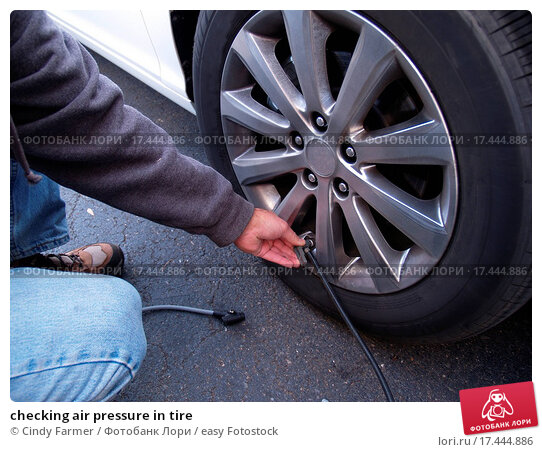 504 Psi.
504 Psi.
What do they write on tires? For example, (2.38-4.0) is clearly atmospheres, or BAR, and (95-135) is Psi. If the number has more than 3 digits or the prefix "k" (kilo), we are talking about metric Pascal. Most often, the desired value is located under the size designation and is duplicated in BAR and Psi as a range, clearly indicating to what pressure you can pump.
Actually, the manufacturer indicates the range within which the tire can function, further - the freedom of the cyclist.
Manufacturers indicate the recommended parameters on the side of the tire. Usually they are in the range of 35 - 60 psi (2.38 - 4.08 atmospheres). But still, this is a parameter that is selected purely individually. Therefore, there are a number of recommendations that are considered common to all people.

Important! With poorly inflated bicycle tires, the tire will move towards the rim, wringing the chamber. This will deform the wheel.
When the cyclist is training on relatively smooth asphalt roads, country and forest dirt roads and paths. For this style of riding, I prefer to inflate the wheels to 3.5-4 atmospheres. Such a high value of bar allows you to achieve good speed characteristics, high rolling, but when it hits bumps and stones, the fifth point immediately feels all the bumps in the road surface.
For those who like pleasure riding at low speed on smooth park roads, 2.5-3 atmospheres will be enough. On the Internet, you can often find recommendations to pump 2-2.5 bar into the wheels, this is justified only for tires at least 2 inches wide and when driving on rough terrain or poor coverage.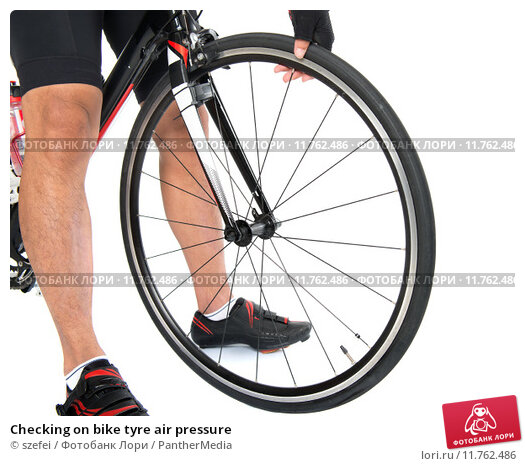 Low pressure increases traction and comfort, but reduces rolling on smooth pavement. Under no circumstances should you ride at a pressure of less than 2 atmospheres.
Low pressure increases traction and comfort, but reduces rolling on smooth pavement. Under no circumstances should you ride at a pressure of less than 2 atmospheres.
The choice of terrain on which you prefer to ride obliges you to choose a certain type of tire, but in general, if you have a universal tread, you can make your ride comfortable on a particular type of road surface by changing the amount of wheel atmospheres. The figures below are based on a standard 2-2.1″ tire.
For gravel, mud, grass, sandy surfaces, it is better to inflate up to 2.5 atmospheres, which increases the adhesion of the tread to the ground and allows the wheel to smooth out all the unevenness of the road surface quite well.
For smooth asphalt roads, feel free to use a pressure of 3 bar or more. However, there is one thing here. If you have a fairly bald tread (wheels with a weak relief or slicks), and you drive at high speed on wet or even wet asphalt, then you risk slipping (flying out) on a turn. If it rains on the road, just slow down or deflate the tires slightly.
If it rains on the road, just slow down or deflate the tires slightly.
This article describes the most acceptable criteria for choosing tire pressure, but since each person independently selects the most convenient pressure values, I advise you, first of all, to experiment when mastering a bicycle.
The bicycle inner tube requires maintenance and pumping very often. Even on the most “hardy” city and mountain bikes, it is necessary to check and pump up the chamber once every 2-3 weeks, since air leaks not only through the nipple, but simply through the rubber. The high pressure "helps" the air molecules to find their way through the insufficiently dense chamber.
"City" or, simply, budget bikes, it is enough to inflate once every 2-4 weeks, mountain bikes - at least once every two weeks, road bikes - once a week, and road and sports bikes - before each trip.
Therefore, the pump is not only an emergency accessory, which is used only when a punctured tire is changed, but also a necessary part of preparation for departure.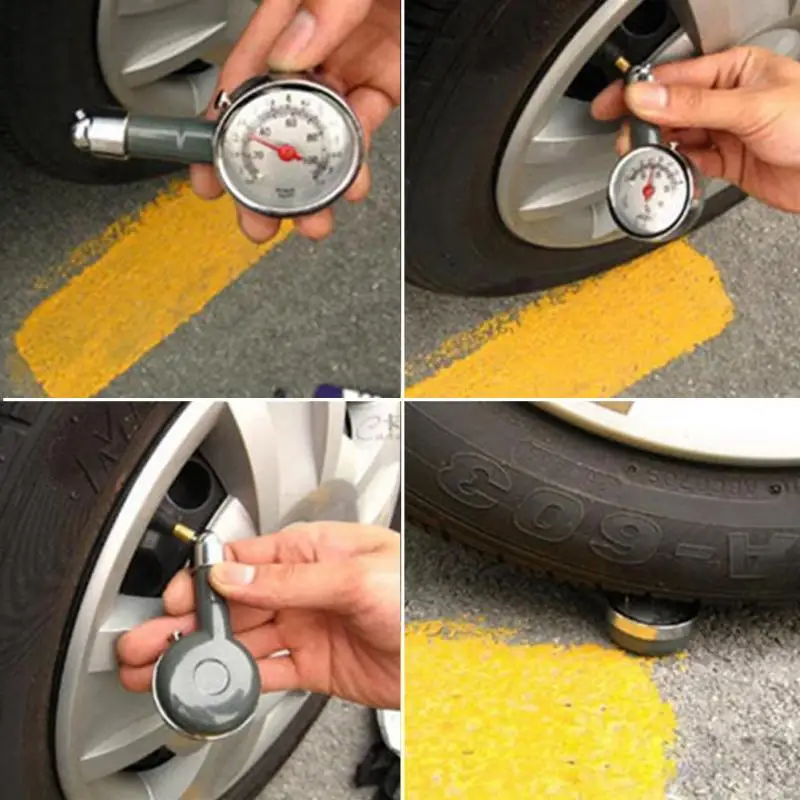 Active cyclists should consider purchasing two pumps:
Active cyclists should consider purchasing two pumps:
By the way, the place of a stationary pump is perfectly occupied by an ordinary car pump. It is also suitable for bicycles, it shows exactly how many atmospheres are inflated, and does not take up extra space. Some people prefer to pump up on "professional" pumps at gas stations, but not having their own professional tool can play a bad joke in case of an unexpected situation or when deviating from the standard route.
Here are some tables that will help you navigate in difficult situations, namely:
Mountain bike table:
| Rider weight (Kg) | Pressure (BAR) | Pressure (PSI) | |||
| 50 | 2,38-2. 59 59 | 35-38 | |||
| 63 | 2.52-EALLY | 37-40 | 9018LA | 2.72-2.93 | 40-43 |
| 2.86-3.06 | 42-45 | ||||
| 105 | 48|||||
| 118 | 3.2-3.4 | 47-50 |
For a road bike, the pressure should be much higher, and usually varies between 6.5 - 9atmospheres (up to 130 Psi), up to the maximum specified by the manufacturer.
For children it is better to inflate tires to the maximum permitted value. This will make it easier to learn to ride a bike, as well-inflated tires have a smaller contact patch and require less effort for the rider.
Seasonal adjustments are quite serious, mainly for mountain bikes. In the summer, you should slightly underestimate the pumping and not rest on the maximum. Hot asphalt also heats the air inside the chamber, which increases the volume and, consequently, the pressure.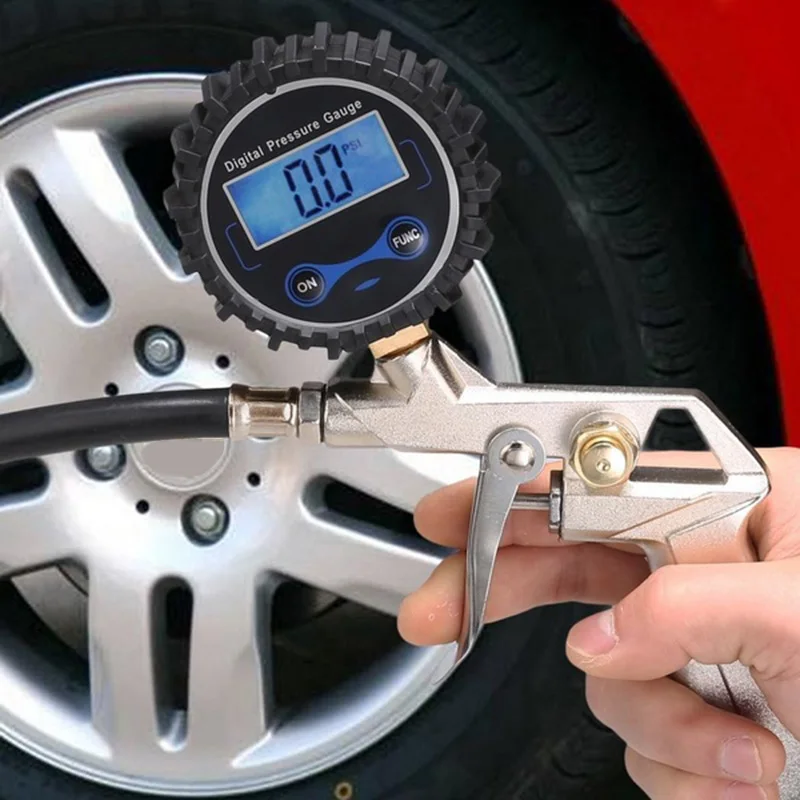 Also, the pumped tire wears out very quickly.
Also, the pumped tire wears out very quickly.
In winter, sometimes the maximum should be slightly exceeded in order to achieve maximum tread work, especially if the rubber is chosen with studs.
For heavy riders or heavily loaded bikes, adding pressure is very important, as more weight will compress the bike's wheel and under-inflated problems can come out much sooner.
The recommended pressure to add by weight is +1% for every kilogram of rider weight over 50.
Optimizing the level of inflation of bicycle tires depends on the type of bicycle rubber used, in particular mainly on the type of tires. If the bike is "shod" in slick or semi-slick rubber, then minimizing the pressure is only permissible on hot days. As bench tests of slick (low-relief) tires have shown, reducing the level by 25.0% to the optimal level nullifies all their advantages.
You can also give advice on how to inflate wheels with different tires.
If the bike is "shod" in tires 2.0 ... 2.3 inches wide with cross-country treads, then the optimal pressure range is 3.0 ... 4.0 atmospheres (bar). Reducing this value will require an increase in the expenditure of muscular energy, and exceeding the level of inflation of bicycle tires above the upper limit, when driving off-road, often leads to explosive destruction of the tire.
Extreme riding tires ("Downhill/Slalom 24″×2.10" or "Kenda K905 20 x 1.95") with compound tread, best inflated to medium recommended pressure. This will provide the necessary grip on the supporting surface. In the future, its indicator can be adjusted for specific driving conditions.
BMX trick models should be moderately inflated, between maximum and minimum, in order to have sufficient grip, and then subtly varied for each trick.
For winter skiing, you should choose a pressure slightly higher than normal, since at sub-zero temperatures the air in the tire becomes denser and takes up less space.
The exact value can only be checked with a pressure gauge. Therefore, you need a pump with a pressure gauge or a separate electronic pressure gauge for bicycles. You can contact a car service to check the pressure and pump up the tires. But before you pump up the bike with a car pump, think. After all, the auto repairman may not pay attention to the pressure and ruin your tires.
Experienced cyclists can read pressure by eye. You can inflate tires with a pressure gauge, memorize the value and squeeze the tire with your fingers. Remember the feeling, so you will learn to understand how inflated your tires are.
Despite manufacturers' recommendations, wheel chamber pressure is a matter of personal preference. Each cyclist adjusts this parameter for himself, for the track he is going to ride, for his personal riding style and level of technical training. Therefore, how much should be pumped up, everyone decides for himself. Every experienced rider knows a number of factors and operates with them:
Every experienced rider knows a number of factors and operates with them:
Bicycle tire pressure is a very important parameter, you need to understand what limitations are imposed by tire manufacturers and what style of riding a particular rider can be improved with just a couple of moves of the pump knob. In any case, how many atmospheres to pump at each moment is a unique decision, and it is made more on the basis of accumulated experience than according to strict rules.
What is the pressure in the bicycle tires?
At 50 kg (110 lb) - 2.4-2.6 atmospheres (35-38 psi)
At 63 kg (140 lb) - 2.5-2.7 atmospheres (37-40 psi) )
Weighing 77 kg (170 lbs) - 2.7-2.9 atmospheres (40-43 psi)
Weighing 91 kg (200 lbs) - 2.8-3 atmospheres (42-45 psi)
Weighing 105 kg (230 lb) - 3-3.3 atmospheres (45-48 psi)
With a weight of 118 kg (260 lbs) - 3.2-3.4 atmospheres (47-50 psi)
mountain bike tire table bar?
The tire pressure of the mountain bike must be between 2.4 and 4.5 bar.
What is the tire pressure on a road bike?
Expensive quality road bike tires 21-23mm in size should have a pressure of 10-11 atmospheres.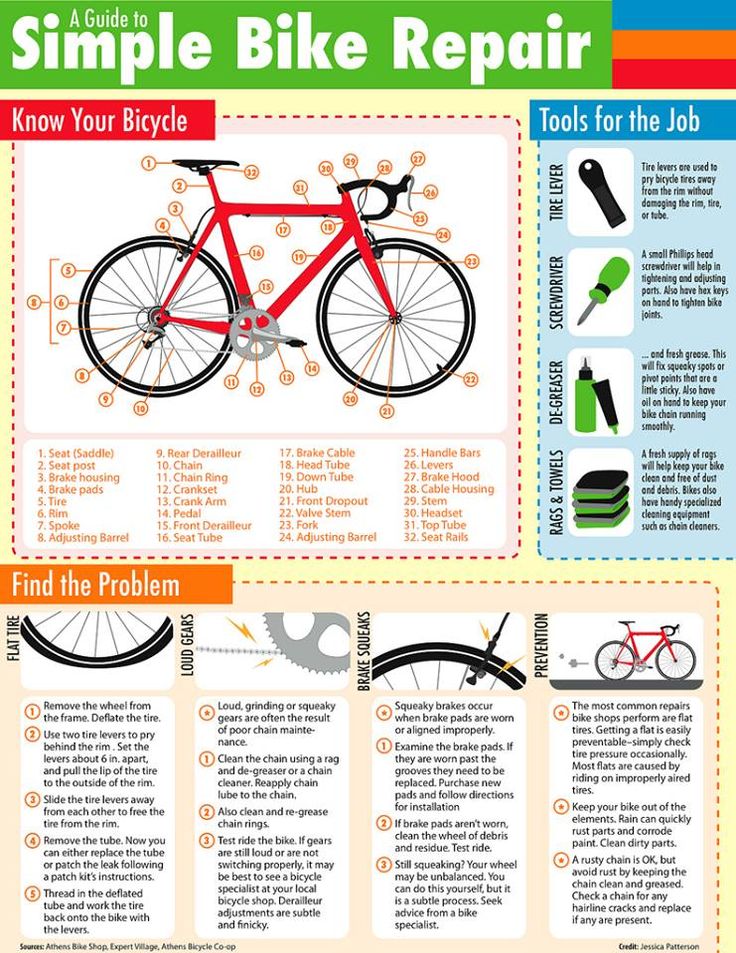 In wider or lower quality pressures are lower, the maximum value is always indicated on the sidewall. It must not be exceeded, it is advisable to maintain it before each ride.
In wider or lower quality pressures are lower, the maximum value is always indicated on the sidewall. It must not be exceeded, it is advisable to maintain it before each ride.
What is the optimal tire pressure for a fatbike?
10 psi - Rolled snow, paths
8 psi - tight snow
6 psi and below - loose snow
5 psi - killed asphalt, soil and crushed stone
Translation in the tires of bicycle 00 9000 9000 9000 9000 9000 9000 9000 9000 9000 9000 9000 9000 9000 9000 9000 9000 9000 9000 9000 9000 9000 9000 9000 9000 9000 9000 9000 9000 9000 9000 9000 9000 9000 9000 9000 9000 9000 9000 9000 9000 9000 9000 9000 9000 9000 9000 9000 9000 9000 9000 9000 9000 9000 9000 9000 9000 9000 9000 9000 9000 9000 9000 9000 9000 9000 9000 9000 9000 9000 9000 9000 9000 9000 9000 9000 9000 9000 9000 9000 9000 9000 9000 9000 9000 9000 9000 9000 9000 9000 9000 9000 9000 9000 psi = 0.
